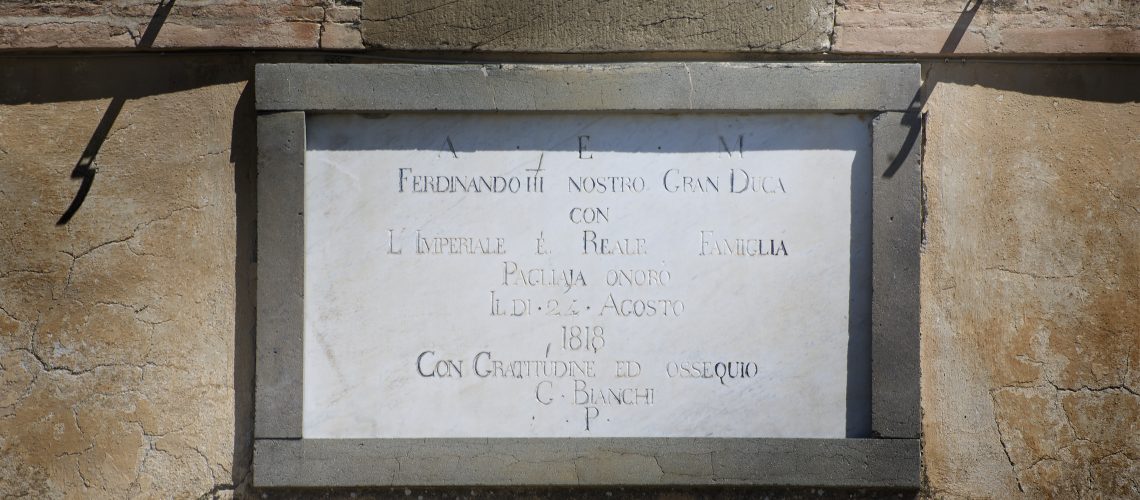Villa La Pagliaia has hosted many people from the past, but its beauty has enchanted one in particular, which has made Tuscany its kingdom and home – the Grand Duke Ferdinand III.
Ferdinand III: an Outstanding Sovereign
Ferdinand III of Habsburg-Lorraine was Grand Duke of Tuscany twice, first from 1790 to 1799 and then from 1814 to 1824. Son of Grand Duke Pietro Leopoldo and Maria Ludovica di Borbone-Naples, he took over the Tuscan throne in 1970, when his father – after obtaining the Habsburg crown – had to abandon it to succeed Joseph II.
It is said that Leopold himself was really sad at the idea of leaving the Grand Duchy of Tuscany, probably because he had a sincere love for this region – that he also managed to pass on to his son. The new Grand Duke, in fact, immediately demonstrated that he cared about this area, continuing with the fatherly reforms that had made Tuscany a great European power. His reign, however, suffered a sharp setback during the period of the French Revolution and the rise of Napoleon, when he was forced to abdicate – but received in return first the Duchy of Salzburg and then the Duchy of Würzburg.
Love for Tuscany
Only in 1814, during the period of the so-called Restoration that followed the fall of Napoleon, did Ferdinand III manage to return to the Grand Duchy. Unlike what happened in other parts of Europe, Ferdinand was lenient and magnanimous towards those who had ruled the Grand Duchy in his absence, guaranteeing continuity in legislation.
The most important measures taken by Ferdinand III were always linked to his love for Tuscany. The Grand Duke, in fact, invested in public works: thanks to his support, roads (such as the Volterrana) and aqueducts were built and the first reclamation works of the Maremma and the Valdichiana began – in which the sovereign himself personally participated. His great personal commitment, however, was not rewarded by fate: precisely because he participated in the reclamation of the swamps, Ferdinand III contracted malaria, which led to his death in 1824.
The Legacy of Ferdinand III: Villa La Pagliaia
Despite his sad end, the memory of Ferdinand III lives on in the works he encouraged – including Villa La Pagliaia. Its construction dates back to the end of the 18th century and is attributed to Giulio Bianchi Bandinelli, a member of an illustrious Sienese family. The Grand Duke was immediately enchanted by the beauty of the villa and made it his official residence when he was in Siena.
Villa La Pagliaia was a refuge for Ferdinand III, an opportunity to escape from the duties of court life and breathe an atmosphere of peace and serenity. Precisely for this reason, his stays in the villa became increasingly frequent over the years, to the extent that it could no longer be considered a mere vacation home. In the company of his court, the Grand Duke even spent weeks at Villa La Pagliaia, admiring its elegant structure and the architecture of the garden. In particular, he loved to get lost in the surrounding landscape and in the immense green spaces available: located in the middle of the hills of Chianti Classico, the villa already offered a magnificent view and housed an incredible variety of plants and trees. Amazing land, mild climate and wide spaces – according to Ferdinand III, Villa La Pagliaia had nothing to envy to any other European imperial residence.


